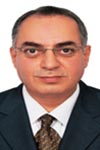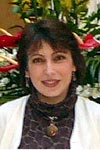Theme: Rare is the Union of Beauty and Purity
WORLD RARE DISEASES 2023
The Scientific Committee for the World Congress on World Rare Diseases 2024 will be pleased to welcome you to the event, which will be held on Feb 08-09,2024 , Paris, France.under the banner "HopeYour immune system may be in question, but the sheer will to live a happy life shall never be in ques Rare is the Union of Beauty and Purity."
Any condition that only affects a small portion of the population is referred to as a rare disease, sometimes known as an orphan disease. Getting a diagnosis for a rare condition can be challenging. When paired together, life-threatening or persistently disabling diseases that are considered rare are actually more prevalent than you might realise. Even though there are no apparent signs at a young age, the majority of uncommon diseases are inherited and develop throughout the course of a person's life. The world's leading interdisciplinary conference for microbiologists, To present their most recent findings, ideas, developments, emerging innovations, and applications in all areas of rare diseases and orphan drugs, bacteriologists, virologists, pharmacists, neurologists, cardiologists, and healthcare experts will be participating.
Who attends:
- Bacteriologists
- Microbiologists
- Virologists
- Pharmacists
- Epidemiologists
- Dermatologists
- Neurologist
- Ophthalmologist
- Cardiologist
- Rare Disease Associations and Societies
- Medical Colleges
- Pharmaceutical Companies and Industries
- Health care professionals
- Students
- Scientists
- Researchers
- Training institutes
- Drug manufacturing companies
Abstract submission starts: Feb 01 , 2024
First Phase Registration Ends: Feb 05 , 2024
Second Phase Registration: Feb 08, 2024
Book your slot: https://rarediseases.infectiousconferences.com/registration.php
Group registration (Minimum 5 members) can avail 20% waivers from the registration fee.
Email: Program Manager at……. or WhatsAapp at (+44) 7868792034 with details of the 5 participants.
Thanks and Regards
Conference Executive
World Rare Diseases 2024
Abstract submission guidelines for World Rare Diseases 2024 conference:
- If you choose to participate in this conference, you need to submit an abstract
- The abstract should carry the summary of a research
- Abstract should be submitted either through e-mail or using the link given below
- Abstracts should be based on any areas as listed in this website as sessions/tracks
Note: The review process for the submitted abstract will take 2-3 working days
Submitting abstract will be published in conference proceedings in the conference supporting journal
Abstract Submission website: https://rarediseases.infectiousconferences.com/abstract-submission.php
Track 01: Rare Diseases
Any illness that affects a very small percentage of the population is considered rare. Rare diseases include uncommon cancers, such as childhood cancers, as well as certain other well-known disorders, such as cystic fibrosisCF, pancreatic fibrosis, mucoviscididosis, fibrosis, and monogenic disorder. Huntington's disease and monogenic disease. The vast majority of rare infections can affect everyone, but some only affect a small number of people or even just one. This is the situation with Mediterranean anaemia, a hereditary anaemia that is common in the Mediterranean region but rare elsewhere. Numerous rare diseases first manifest in childhood. For a number of uncommon disorders, the exact cause is still unknown. However Environmental variables, microbial infections, genetic mutations, food, smoking, and chemical exposure also have an impact.
Track 02: Infectious Diseases
Unusually, several words are used to describe infectious diseases. An infectious disease is an ailment brought on by an organism, and illness is the presence of pathology. The ability of an organism to cause illness in a given host is referred to as virulence. The level of the host's resistance to a specific germ is referred to as immunity. Vaccines prevent various infectious diseases, including varicella and morbilli. You can contract a communicable disease in a number of different ways, such as by bites from an animal or bug, tainted food, or polluted water. Babies born to expectant women will also contract certain germs from them; infectious disorders are normally distinguished by the primary organ system involved.
Track 03: Rare Cancer Diseases
Rare cancers affect an incredibly small population of people. If a cancer begins in a unique location within the body, it may also be regarded as rare. Or if the cancer is a rare type that requires specialised care and is brought on by ad hoc changes in the body. Experts are unsure of what causes the mutation. Since many people may not exhibit symptoms until later stages, regular blood tests are all that is needed to make the identification. When symptoms do appear, they include fatigue or a sensation of exhaustion, loss of weight, pale skin, and nocturnal sweats. These illnesses harm the bones, kidneys, system, and red blood cell count.
Track 04: Treatment for Rare Diseases
As eighty percent of rare diseases are caused by a single sequence and gene medical treatment has the potential to repair several genetic abnormalities, it is one of the reasonable strategies to treat rare sequencetic disorders. Restore one sequence defect by introducing a "right" sequence. Additionally, womb-to-tomb improvement may require only a single dosage of outstanding sequence medical therapy. Misuse of antisense medicine is one of our personal methods for treating rare diseases, and it mostly relies on ribonucleic acid for medication delivery. Treatment for uncommon disorders using live cells injected into the patient for therapeutic effect is known as cell medicine.
- Rexin G
- Carmustine
- Nanotechnology and Nano-medicine
Track 05: Rare paediatrics Diseases
Rare paediatric illnesses, which can be serious or fatal, affect people from birth to age 18, including the age groups often known as neonates, babies, children, and adolescents. One example of a paediatric rare disease is achondrogenesis. Due to increased public awareness, significantly improved understanding and treatment of the relatively many common disorders, the elimination of biological process deficiencies, and the subsequent development of laws related to the treatment of rare diseases, paediatric rare diseases have received excessive attention in recent years.
Track 06: Rare Skin Diseases
The majority of disorders that affect the skin start deep beneath its layers, and these anomalies are crucial in identifying a variety of internal diseases. The inherent region-specific anatomical variability of the skin can significantly alter how a rash appears. This becomes clear after skin is transplanted from one area of the body to another and still displays the morphological traits of the donor area. Hereditary skin illnesses are commonly categorised using gross morphological, histologic, and microscopic results; however, the precise diagnosis is frequently uncertain since skin diseases may not always appear in a recognisable way.
Track 07: Rare Diseases in Brain
The main link between brain illnesses and altered brain function or structure is this. this may be primarily due to seizures, state-of-mind, temperament changes, tumours, and infections. Jakob-Creutzfeldt disease (CJD) is an uncommon chronic brain disorder that is characterised by rapidly advancing medical conditions and severe symptoms. Once symptoms start, those who are impacted may experience disorientation, depression, changes in activity, reduced vision, and/or impaired coordination. As the illness worsens, vascular insanity results, which causes confusion and disorientation. More loss of cognitive and physical abilities, as well as tract infections such respiratory disease, may occur in later stages of the illness.
- Gerstmann-Straussler-Scheinker unwellness
- Amyotrophic lateral induration
- Creutzfeldt-jakob unwellness
Track 08: Rare Genetic Diseases
Rare genetic diseases ar caused by one or a lot of abnormalities within the ordination. it should be caused thanks to mutation in a very single sequence or multiple genes. However, there aren't any proverbial treatments for genetic disorders. Several genetic disorders influence stages of development like Down's syndrome, whereas others end in physical symptoms like hereditary condition. Thanks to the wide selection of genetic disorders, identification is wide varied and looking on the disorder. Sequence medical care refers to at least one of the treatment wherever a healthy sequence is introduced to a patient. this could scale back the defect caused by a faulty sequence or slow the progression of the unwellness
- Albinism
- Angelman syndrome
Track 09: Rare Hematology Diseases
RBC beta monogenic disorder, Diamond-Blackfan anaemia, and other anemia-type red vegetative cell conditions, white vegetative cell dysfunctions associated with various malignancies, and immuno-protoplasm-based abnormalities that affect platelet and lymphocyte disorders are just a few examples of the diverse subcategories of rare medical specialty diseases. Some rare blood illnesses, particularly those that are gene-based, can be distinguished with ease with a simple test, whilst others require substantial research to be properly analysed. Haematologists are skilled practitioners because they must be experts in differential diagnosis due to the wide diversity of blood diseases, both common and extraordinary.
Track 10: Rare Diseases Analysis
Due to the rarity and variety of rare infections, research must be conducted globally to ensure that experts, researchers, and doctors are connected and that clinical trials are conducted internationally so that patients can benefit from the pooling of resources across borders. Patients with rare illnesses still have to endure lengthy wait times in the healthcare system before a firm diagnosis is made. Analysis of rare infections is essential since many patients still need the right diagnosis and related treatments, and because experience in this field is very scarce.
Track 11: Rare Response Diseases
In later years, national and international associations are established to inform and protect patients affected by these ailments. Rare infections caused by systemic changes represent a field of life science that is very interesting and is constantly expanding. These disorders have a ludicrous social and economic impact because they typically affect young or severely ill children who are at the height of their social activities and relationships. A hereditary condition may cause a malfunction of bone formation that prevents animal tissue from continuously converting to bone. It is distinguished by genetic abnormalities, limited elbow range of motion, and conventional intellect. The majority of inherited diseases are not contagious. World Health Organization estimates that about 80% of people have an inherited disease.
Track 12: Orphan Medicine
Orphan drugs are a group. The medical product designated to treat rare diseases or unusual disorders and intended for the treatment, obstructing, or designation of a rare sickness or condition are called as "orphan medications" due to their niche markets. According to the definition of an orphan disease, it only affects 200,000 people nationwide. The majority of orphan diseases have a genetic basis. One in fifteen people could be affected by an orphan disease worldwide.
- Cystic pathology
- Wilson’s illness
Track 13: Rare Endocrine Genetic Diseases
There are numerous rare disorders of the body. According to the National Organization of Eudaimonia, over 175 different rare diseases affect the system, a complex system of organs and glands that uses about 30 different hormones to affect a variety of vital functions, including growth, metabolism, heart function, and fertility. Addison's disease is extremely rare. However, any organ system may likely be affected by rare endocrine illnesses.
Track 14: Clinical analysis and Treatment
Rare diseases provide unique chances to explore human physiology and life science. major scientific discoveries as a result of research on uncommon diseases. In order to share the findings of their research and advance more successfully, researchers are working through networks more and more frequently. The gratification of correctly diagnosing a patient with a rare sickness is frequently swiftly offset by the notion that the patient's condition can only be known about and treated to a limited extent due to its nature and, consequently, the challenges of learning the illness. A pharmaceutical product created for the treatment of uncommon disorders may be considered an associate orphan medication. Science will provide some solutions for all rare ailments.
Track 15: Mystery designation of Rare Diseases
The prevalence of rare diseases is between 2 and 4%. Children between the ages of 3 and 5 are most at risk. Eighty percent of uncommon illnesses are genetic in character, therefore ordination sequencing-based designation offers an encouraging alternative for the management of rare diseases. Mystery designation for rare diseases is entire ordination sequencing. By analysing many genes, ordination sequencing, which has a diagnosis rate of 62.5%, will be utilised to analyse rare and unknown illnesses in order to identify the relevant
Track 16: Neglected Tropical Diseases
The group of parasitic and microbial infections known as neglected tropical diseases affects nearly one billion people worldwide and costs poor nations' economies billions of dollars annually, including 836 million children. People typically have more than one parasite or contamination because "they are" or "they are" frequently grouped together geographically. Once selected open eudaimonia approaches are combined and disseminated locally, palmy management will be accomplished. Trade is influenced by the local medical specialty and the availability of appropriate treatments to recognize, anticipate, and manage illnesses. Multiple tropical diseases will be anticipated, treated, or eliminated thanks to newly developed advancements in safe and effective technology. Management relies on straightforward mediations.
Importance & Scope:
There are more than 7,000 uncommon diseases that have been recognised, and 70% of them are not being treated in any way. Administrative benefits like extended market sifting, forward-thinking assignments, reduced costs, and assessment motivators are all comforting hypotheses.
World Rare Diseases 2023 will be the ideal forum for all experts and super experts, recognised scientists, research scholars, and students working in this field worldwide to exchange knowledge on rare diseases in one location. In an effort to combat disorders like haemophilia, cystic fibrosis, lupus, motor neurone disease, acromegaly, Fragile X syndrome, Gaucher's disease, and Gorlin's syndrome, among many others, this event is a search for an alternative to intrusive imaging techniques. These ailments are frequently called "orphan diseases." only a small percentage of the population are affected. The number of diseases for which there is now no cure is thought to range between 4,000 to 5,000 globally.
Impact of Rare Diseases:
Rarity is a quality that can receive praise or criticism depending on the circumstances. A rare genetic mutation that results in a rare, incurable disease is not as desirable as a rare gem, for example. A condition is considered uncommon or orphan if its frequency is exceptionally low since it only affects a small proportion of the population. As defining such disorders is a complex matter, they have not yet been encompassed in a single, all-encompassing term. This is due to the fact that these illnesses exhibit symptomatic heterogeneity that is also influenced by the socioeconomic and demographic makeup of the patient. As a result, the majority of definitions are based on estimates of prevalence, which undermines the effects of geography and rarity.
Diagnosed Ratio in Rare Diseases:
Based on the severity, penetrance, or type of the disease (child, juvenile, or adult types), it was discovered that among the few rare diseases studied, 18% had an average lifespan, 44% were potentially fatal during childbirth or before the age of 5, 4% were adult, and 78% were caused by genetic disorders.
Success probabilities for Rare Diseases vs All Diseases
Since most rare diseases may already be diagnosed, technological advancements have made it easier to identify uncommon diseases and create the complex biological molecules that are frequently needed to treat them. Today's rare diseases are no longer so uncommon.
Related Societies
Europe
- Infectious Diseases Society of Ireland
- The International Society for Neglected Tropical Diseases
- HealthCare Infection Society
- Society of Infectious Disease
- Spanish Society of Paediatric Infectious Diseases
- Spanish Society of Paediatric Primary Care
- British Society for Immunology
- European Society for Immunodeficiency
USA
- Canadian Association for Clinical Microbiology and Infectious Diseases
- National Institute of Allergy and Infectious Diseases
- Tropical Pathology & Infectious Diseases Associations
- International Society for Infectious Diseases
Asia Pacific
- Victorian Infection Control Association
- Victorian Infection Control Professionals Association
- Infection Control Practitioners Association of Queensland
- Infection Control Association of South Australia
- Infection Control Association of Western Australia
Middle East
- The Arab Society of Infectious Diseases and Antimicrobials
- The Egyptian Society of Tropical Medicine
- Egyptian Society of Immunologists
- Genetic Diseases Society
- Molecular Biology Society
- Emirates Neurology Society
We gratefully thank all our wonderful Keynote Speakers, Speakers, Conference Attendees, Students, Organizing Committee Members, Associations and Media Partners for making WORLD RARE DISEASES 2022 Conference the best ever Webinar.
The 5th International Conference on Rare Diseases, hosted by the Conference series was held during June 22, 2022 Webinar.
Our sincere thanks to Organizing Committee Members for their gracious presence, support and assistance towards WORLD RARE DISEASES 2022 conference, and with the enormous feedback from the participants and supporters of WORLD RARE DISEASES 2022, Conference series LLC Ltd is glad to announce 5th International Conference on Rare Diseases Feb 08-09,2024, Paris France . Let us meet again @ WORLD RARE DISEASES 2024
Conference Highlights
- Rare Diseases
- Orphan Drugs
- Infectious Disease
- Rare Genetic Diseases
- Rare Pediatric Diseases
- Rare Dermatological Diseases
- Rare Haematological Diseases
- Rare Cancer Diseases
- Rare Diseases in Aging
- Rare Diseases in Brain
- Rare Diseases in Endocrine System
- Rare Gastrointestinal Diseases
- Immune System Diseases
- Rare Autoimmune Diseases
- Challenges in Rare Diseases
- Clinical Research on Rare Diseases
- Treatment for Rare Diseases
- Living with Rare Diseases
- Mystery Diagnosis of Rare Diseases
- Future of Rare Diseases Research
To share your views and research, please click here to register for the Conference.
To Collaborate Scientific Professionals around the World
| Conference Date | February 08-09, 2024 | ||
| Sponsors & Exhibitors |
|
||
| Speaker Opportunity Closed | |||
| Poster Opportunity Closed | Click Here to View | ||
Useful Links
Special Issues
All accepted abstracts will be published in respective Our International Journals.
- Molecular and Genetic Medicine
- Journal of Genetic Syndromes & Gene Therapy
- Journal of Rare Disorders: Diagnosis & Therapy
Abstracts will be provided with Digital Object Identifier by






